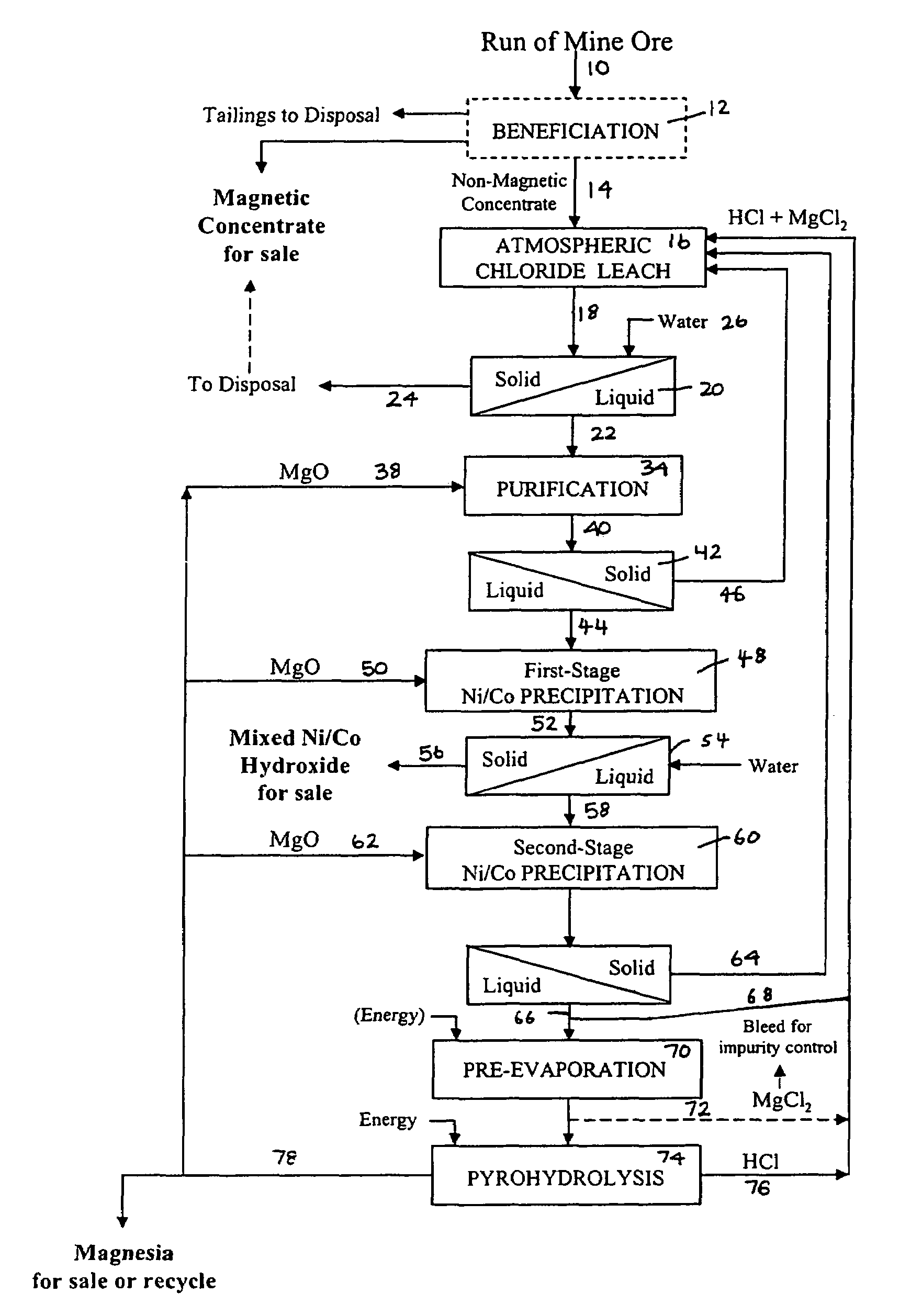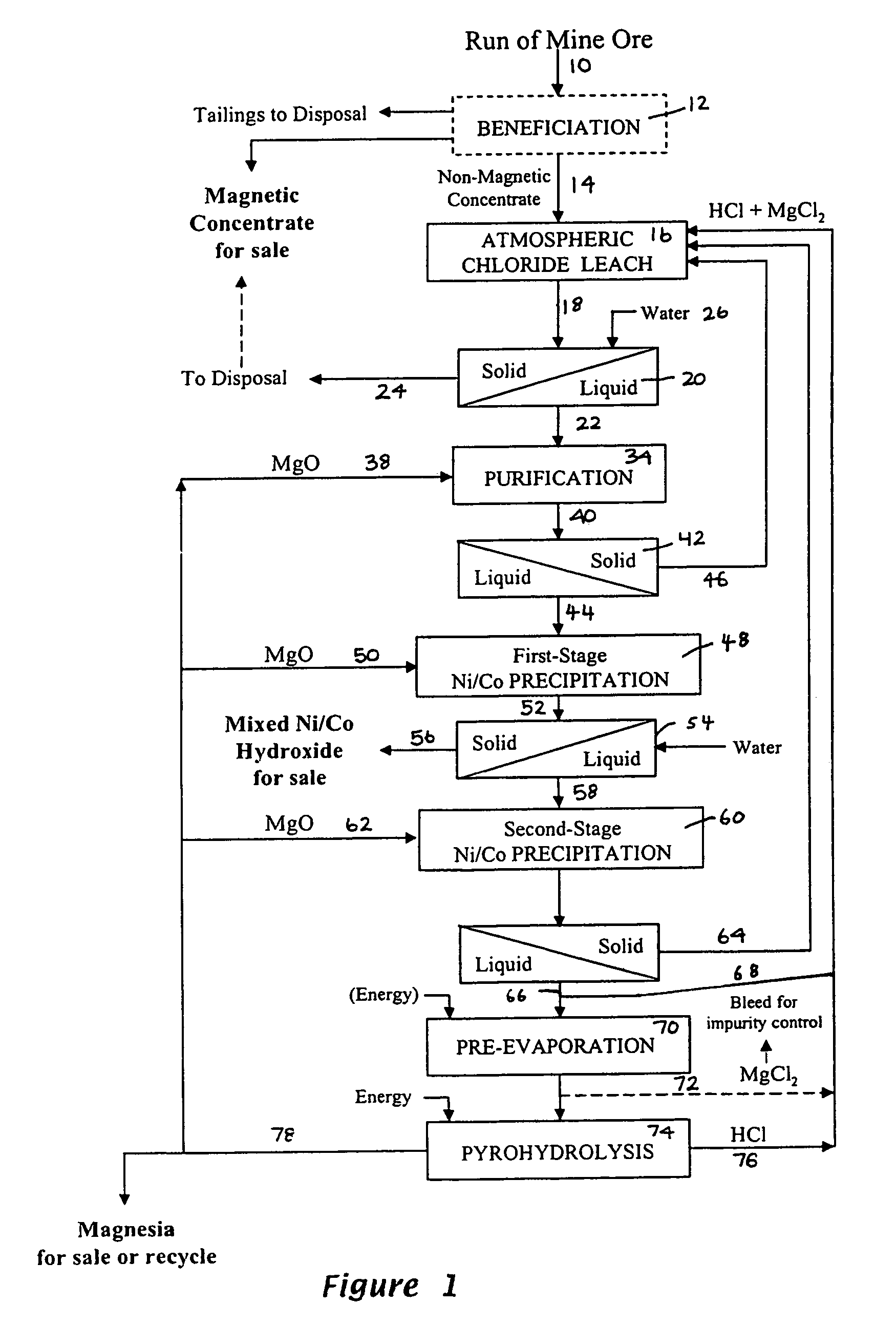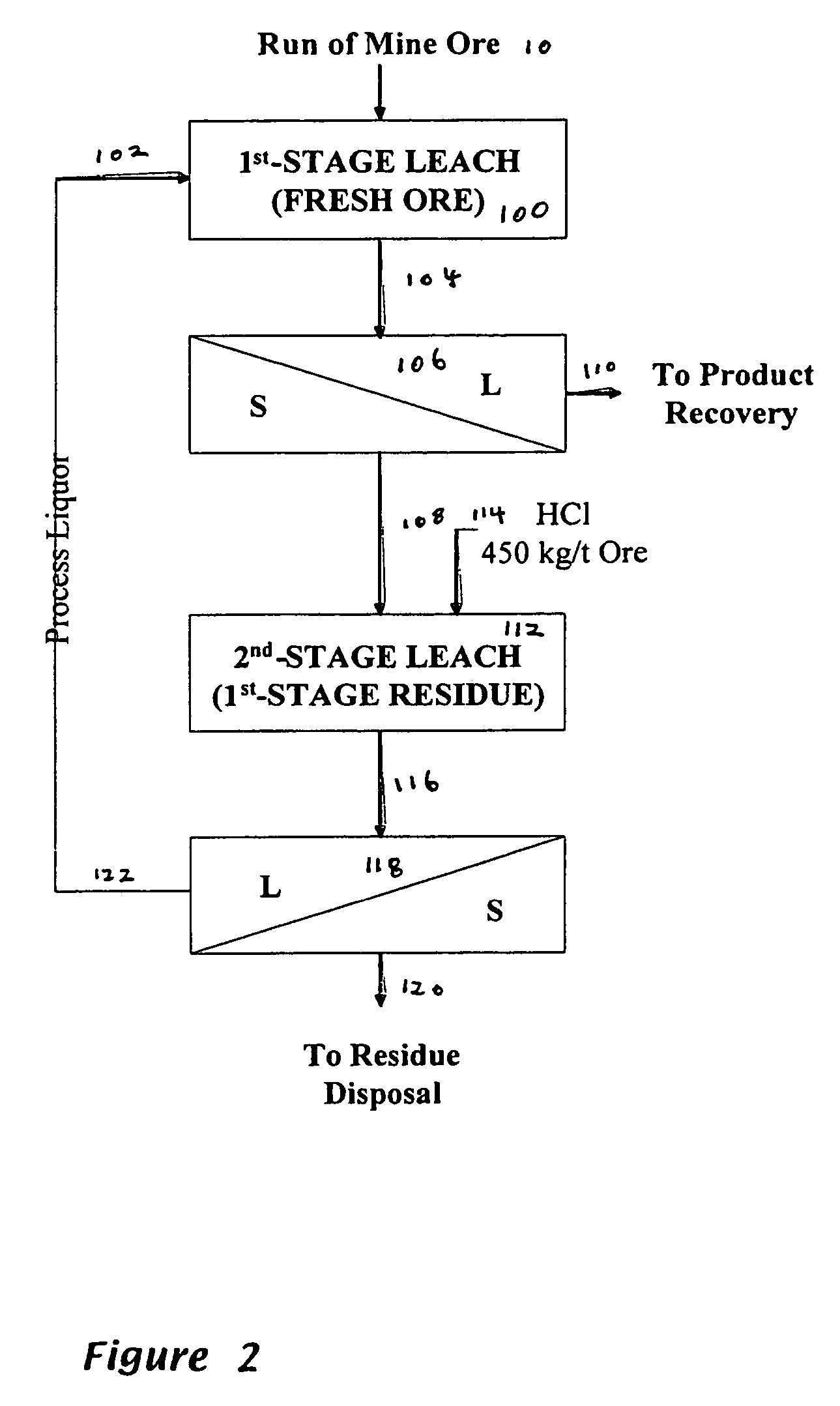Process for the recovery of value metals from material containing base metal oxides
- Summary
- Abstract
- Description
- Claims
- Application Information
AI Technical Summary
Benefits of technology
Problems solved by technology
Method used
Image
Examples
example i
[0140]A series of laboratory experiments was carried out, wherein samples of 100 g of mixed saprolitic and limonitic ore from the Sechol deposit in Guatemala were treated. The mixed ore had the following analysis, the amounts being reported in wt %: nickel 2.25%; cobalt 0.03%; magnesium 14.4%; iron 15.2%; silicon 16.0%; calcium <0.05%; aluminum 0.9%; copper <0.05%; zinc <0.05% and chromium 0.53%. This ore also contained 20% of a refractory magnetite phase, which was not readily amenable to leaching. The samples were leached at 20% solids density for four hours at 100° C. in mixtures of magnesium chloride and hydrochloric acid, varying (i) the total chloride ion concentration, and (ii) the magnesium to acid ratio. Table 1 provides further details and the results obtained.
[0141]
TABLE I%ChlorideExtrac-Initial HCl ConcentrationConcentrationtion1N1.5N2N3N4NMg / HCl0.370.14ratio150 g / LNi75.971.3Fe1.110.8Mg53.440.8pH0.890.47Eh581619Mg / HCl1.831.10.750.390.21ratio230 g / LNi60.569.781.288.193.1F...
example ii
[0143]An example of a counter-current leach test is shown in FIG. 4. Fresh ore was fed to a first leaching step, in which there was a lixiviant containing 360 g / L of magnesium chloride in hydrochloric acid, the hydrochloric acid being obtained from recycled lixiviant. The first leaching step was operated at 105° C. The pH was 0.38, the Eh was about 400 mV and the ratio of Mg / HCl on a mass basis was 0.84. The leach slurry obtained was fed to a solids / liquid separation step, from which liquor containing value metals was separated for further processing. The solids were fed to a second leaching step to which hydrochloric acid was fed at a rate of 450 kg / ton of solids. The lixiviant again contained 360 g / L of magnesium chloride. The second leach was conducted at 105° C. for 4 hours. The pH was in the range 0.68-0.72, the Eh was about 400 mV and the ratio of Mg / HCl on a mass basis was 0.91. A second solids / liquid separation step was conducted; the liquor, which contained 1.2 g / L of nicke...
example iii
[0144]A sample of a lateritic nickel ore with a relatively low iron content was subjected to leaching. The composition of the ore was as follows, the amounts being in wt %: Ni 2.3%, Co 0.03%, Mg 14.4%, Fe 15.2%, Si 16.0%, Ca <0.05%, Al 0.9%, Cu <0.05%, Zn <0.05%, Cr 0.5% and Mn 0.18%. The mesh size of the ore was −100. The leach time was 4 hours and the temperature was 95° C. The leach solutions had 20% solids.
[0145]Further process details and the results obtained are given in Table II. In Run 1, the lixiviant did not contain hydrochloric acid, and in Run 2 magnesium chloride was not added. Thus, Runs 1 and 2 are comparative runs.
[0146]
TABLE IIRun No.12345Initial HCl concentration,—2.252.252.252.25NChloride conc. (g / L)12079200230250Mg / HCl (mass)10 / 10.50.620.7PH5.20.2Eh (mV)100450520528538Ore weight loss (%)2.43546.544.442.7Ni concentration (g / L)0.042.23.544.54.42Fe concentration (g / L)0.834.55.89.89.8Ni extraction (%)044.085.987.086.5
[0147]The residue from Run 4 was analyzed, and con...
PUM
| Property | Measurement | Unit |
|---|---|---|
| Temperature | aaaaa | aaaaa |
| Temperature | aaaaa | aaaaa |
| Percent by mass | aaaaa | aaaaa |
Abstract
Description
Claims
Application Information
 Login to View More
Login to View More - R&D
- Intellectual Property
- Life Sciences
- Materials
- Tech Scout
- Unparalleled Data Quality
- Higher Quality Content
- 60% Fewer Hallucinations
Browse by: Latest US Patents, China's latest patents, Technical Efficacy Thesaurus, Application Domain, Technology Topic, Popular Technical Reports.
© 2025 PatSnap. All rights reserved.Legal|Privacy policy|Modern Slavery Act Transparency Statement|Sitemap|About US| Contact US: help@patsnap.com



